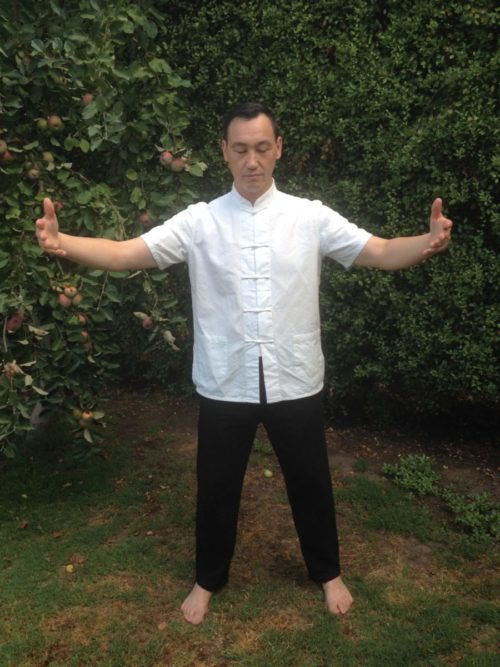
Qigong vs. Tai Chi
Qigong and Tai Chi (Taijiquan) are two forms of ancient Chinese exercise for health. Tai Chi is well known in Geelong, however many people are not aware of Qi Gong and do not know the difference between the two. In this blog, we give a broad overview of similarities as well as differences.
Qigong (roughly translating to energy exercises, or Arts of Qi) is an inclusive term to describe exercise practices that focus on cultivating the Qi, or internal energy, to improve health, fitness, wellbeing and longevity.
Tai Chi (developed later on) was a form of martial art developed with Qigong understanding of internal energy and how to use it for health or fighting. Tai Chi in the modern days is mostly practised with a focus on its graceful Qi cultivation side for health rather than for combat.
Qigong and Tai Chi both have been developed from the same concept of Qi that is emphasised in Chinese medicine and acupuncture. Qi gives energy to life and the fluent and constant flow of Qi through the body helps maintain our health. When the flow of Qi becomes stagnant or blocked, illness can occur.
Similarities:
Qi Gong & Tai Chi share the following similarities:
- Having the same philosophical understandings of Qi and health, which is regular proper practice positively, affects our physical health, mind and spirit.
- Cultivating and directing Qi in the body.
- Involving slow measured purposeful movements.
- Regulating breathing.
- Mindful awareness/ meditative practice.
- Integration of movement, breath and meditation.
- Growing evidence for positive outcomes in a number of health conditions, such as chronic stress, arthritis, chronic pain, balance and memory.
Differences:
They differ in how they are practised and level of difficulties.
Application and practice
- Tai Chi is a form of martial art with self-defence moves and applications, therefore Tai Chi requires people to practice in a standing position; and involves a series of movements with constantly changing body positions and postures.
- Qigong practices can have different emphases such healing and health, meditative spiritual aspiration, or martial strengthening focuses. Qigong exercises can be practised in standing, sitting or lying position, therefore it can be practised by people with different levels of physical fitness.
Level of difficulties
- Qigong movements are simple and more adaptable to an individual level of physical ability. Health benefits are evident as long as the major principles are followed.
- Tai Chi movements require the intricate alignment of the body. Some positions, stances and moves used by Tai Chi are difficult and take much practice. Experienced teachers may modify the movements for those who are unable to achieve this due to health or injury limitations.
In closing both Qigong and Tai Chi are good for health. They complement each other, and are often taught together. If anyone is interested in experiencing these health practises please click on the link Qigong for more information.

